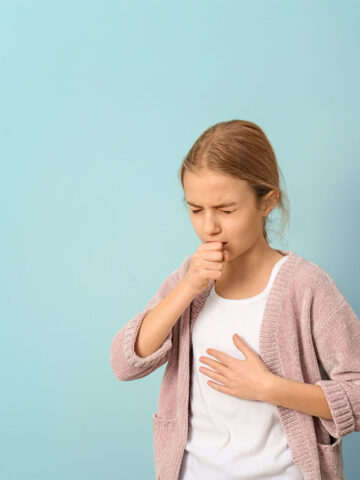Frequent and thorough handwashing remains a top method of protecting against COVID-19 and other viruses, but dry and cracked hands may be an unfortunate side effect in children and adults alike.

“Thorough handwashing is an absolute must during COVID-19, but it can lead to dry skin ,” says Dr. Angela Dangvu, a pediatrician in the CHOC Primary Care Network. “There’s a lot we can do to help, while still ensuring proper handwashing is maintained.”
Here, Dr. Dangvu offers tips to help protect tiny hands against dryness without compromising thorough hand washing that’s so critical during the pandemic.
Choose soap carefully
Start by choosing a moisturizing hand soap, Dr. Dangvu says. Pick soaps that look more like lotions than a typical soap with words like “moisturizing” or “conditioning” on the packaging. Unless your child is already using these and is accustomed to them, try to skip antibacterial or deodorant soaps.
If they are available, use soap and water instead of hand sanitizer, Dr. Dangvu advises. The alcohol content in the hand sanitizer can sting hands that are already dry and cracked. If hand sanitizer is only available, be sure that it has at least 60 percent alcohol to ensure a thorough cleaning.
Timing is important
Parents should remind their children that when they are at home, they ought to be washing their hands at these times:
- Before and after cooking or eating
- After using the restroom
- After cleaning around the house
- After touching family pets
- Before and after caring for a sick family member
- After blowing their nose, coughing or sneezing
- After changing a diaper
- After being outside — playing, gardening, walking the dog, etc.
Beyond these instances, children do not need to continually wash their hands at home, Dr. Dangvu says.
“Children are such great learners and have been so incredibly adaptable during the pandemic, and many have really taken on to importance of handwashing,” she says. “Too frequent handwashing can worsen dry and cracked hands.”
Creams, not lotions
Applying moisturizer to a child’s hands after hand-washing or bath time can also help prevent dry hands. Select products described as creams rather than as lotions: The former are richer and have more staying power than thinner products like baby lotions, Dr. Dangvu says.
“They tend to stay on and be a better moisture barrier,” she says. “Parents should use them right after children wash their hands. If skin is still a little moist, the cream will trap that moisture. Apply it after bath time too.”
A three-step approach
If a child’s little hands still become dry, Dr. Dangvu recommends a three-step approach:
- Start by regularly applying cream to the hands.
- If dryness doesn’t improve after a few days, move on to a petroleum-based ointment. Parents can intensify the therapy by applying ointment to hands before bed, and asking children to wear cotton gloves or even socks over their hands to lock in moisture while they sleep.
- If the condition doesn’t change after a few more days, parents can try an over-the-counter hydrocortisone cream.
If these steps don’t yield improvement, it’s time to consult the child’s pediatrician to rule out a bacterial infection or other condition, Dr. Dangvu says.
For more health and wellness resources from the pediatric experts at CHOC, sign up for the Kids Health newsletter.
Find a CHOC Primary Care Pediatrician
From babies to teens, pediatricians from CHOC’s Primary Care Network partner with parents to offer immunizations, sick visits, sports physicals and more.





